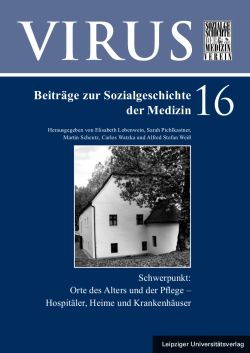
VIRUS Band 16, pp. 141-154, 2020/07/22
Schwerpunkt: Orte des Alters und der Pflege – Hospitäler, Heime und Krankenhäuser

Eighteenth-century Dresden must have been an unhealthy place to live, however, there was growing institutional provision for curing the sick and the poor. The three oldest hospitals date back to the Middle Ages and the fifteenth century, first being an institutional place of health care for almost everyone who was in need, then during the sixteenth century was almost exclusively reserved for Dresden citizens, male and female. Albeit under municipal administration, it was the Elector of Saxony, who funded some of these hospitals and this combination caused many troubles and constituted demands on both sides. The lazaret, which was founded for those who suffered from the Black Death, but turned into a melting pot for day labourers, beggars and craftsmen in the sixteenth century, became the center of this emotionally energized town-country relationship. Due to war, hunger crisis and changes of administrative power, the lazaret’s finances rapidly declined, the accommodation of the poor was limited and the building fell into a state of disrepair. On its way to a postulated contemporary modern hospital, the lazaret was completely at the mercy of different interests, which made a real transformation of this institution nearly impossible.
Keywords: Hospital, Dresden, Early Modern Age, financing and funding, organization, medicalization, institution, change, town, country